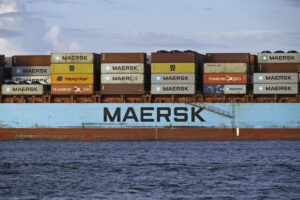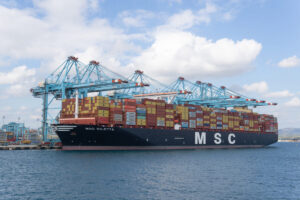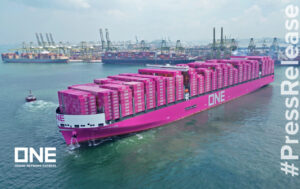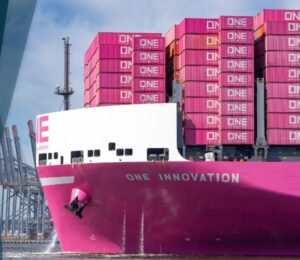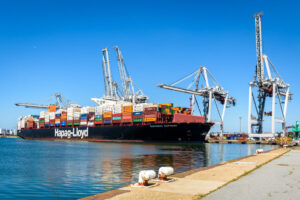Hutchison Ports’ Hongkong International Terminals (HIT) Container Terminal 9 (CT9) North in Tsing Yi has become the first container terminal in Hong Kong to have its container stacking fully automated.
The terminal operator’s automation project has led to the installation of new remote-controlled, rubber-tyred gantry (RTG) cranes (pictured below) and an automated container stacking system.
Hutchison Ports also reported that its project is unprecedented as it is the first container terminal to ever transit RTGs to a remote-controlled and automated stacking system while maintaining full operations.
With the introduction of remote-controlled cranes and an automated container stacking system, each crane is now equipped with 58 monitoring cameras and sensors to ensure full precision and enhance industrial safety in its operation.
The new remote operation system is integrated with a database at the terminal to work out where and how the containers can best be grounded or stacked.
Cranes under the new system are 20% more efficient and productive than manual ones, and crane that used to load and unload containers from trucks outdoors now operate in an office setting, instead of in crane cabins.
Learn more about terminal automation at Port Technology's Container Terminal Automation Conference on March 14 – 15, 2018 – London, UK
Rubber-tyred gantry cranes work alongside ship-to-shore cranes to deliver containers to drivers in trucks. Credit: HIT
Learn why Pakistan is in a prime location on the East-West trade routes by reading the 'Pakistan’s High-tech Port of Call' technical paper by Captain Syed Rashid Jamil, Chief Executive Officer, Hutchison Ports Pakistan
HIT pioneered a remote operation system of rail-mounted gantry cranes at its terminal back in 2012.
In late 2013, HIT started to configure 29 RTGCs, which had been manually operated by crane operators from crane cabins, into remote-controlled cranes.
Simultaneously, it introduced an automated container stacking system.
Both major developments took place at CT9 North.
Angela Lee, Deputy Secretary for Transport and Housing, said at the launching ceremony that the port has long been a cornerstone of Hong Kong’s economic growth.
HIT’s Managing Director, Gerry Yim, pointed out that the remote crane operations will improve the crane operators’ working environment, increase industrial safety, bring about higher operational efficiency and productivity and make the terminal environment cleaner by reducing carbon emissions.
HIT is also organising training opportunities and promotional activities to attract new talents into the industry to ease the labour shortage.
Yim said that Hong Kong’s container terminal industry has faced many challenges over the past few years, including global recessions, labour shortage and the decrease in container throughput.
However, he added that the transition to remote operations can enhance the overall operational efficiency and competiveness of terminals in Hong Kong, which will maintain the city’s status as a major transshipment port.



